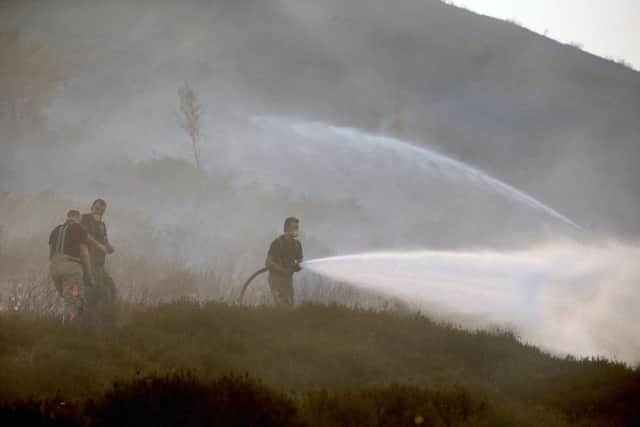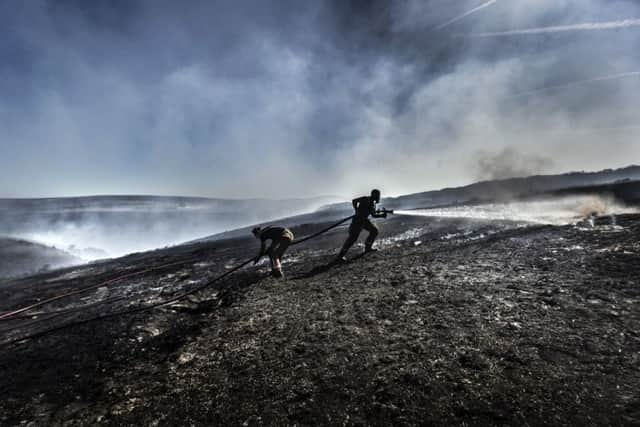Yorkshire sees huge rise in wildfires but firefighters '˜lack funding' to cope
At least 25,000 grass and wildfires were fought by firefighters nationwide between May and July, more than double the average number of such fires in previous years, figures obtained under the Freedom of Information Act show.
Of those blazes, more than two-thirds were acts of arson.
In Yorkshire this summer, South Yorkshire Fire and Rescue Service, dealt with 1,227 wildfires, far more than the 363 such fires it recorded on average during the same months over the previous four years.


Advertisement
Hide AdAdvertisement
Hide AdNorth Yorkshire Fire and Rescue Service tackled 243 wildfires, compared to an average of 77 over the summers of 2014 to 2017.
Similarly, Humberside Fire and Rescue Service battled 345 wildfires this summer, compared to a previous four-year average of 148.
Of the 1,815 grass and wildfires that the three fire services’ attended, some 1,237 were believed to have been started deliberately.
The true number of wildfires across Yorkshire this summer are far higher but West Yorkshire Fire and Rescue Service did not provide its full figures.


Advertisement
Hide AdAdvertisement
Hide AdNationally, a third of the 40 fire services that shared their data witnessed the number of wildfires triple compared to previous averages.
A spokesman for the Fire Brigade Union (FBU) said: “The growing risk of grass fires represents another strain on the dwindling resources of fire and rescue services currently experiencing severe budget cuts across the country. Fire services do not receive enough funding to respond to an increase on this scale.”
Soaring temperatures, combined with weeks without rainfall, turned vast areas of the country into a tinderbox this summer, stretching fire service resources.
Among the worst fires was one at Winter Hill in Lancashire, which spanned seven square miles, and at Saddleworth Moor, where firefighters appealed for donations of sun cream, bug spray, hats and socks due to budget shortfalls. They even asked the public to lend their vehicles so that supplies could be delivered to fire crews on the front line.
Advertisement
Hide AdAdvertisement
Hide AdThe FBU spokesman said: “Does that sound like a properly resourced fire service? We also had reports of firefighters working for 17 hours straight to get the wildfires under control. That is simply not good enough.”
While the summer’s weather was “exceptional”, Chris Lowther, operations lead at the National Fire Chiefs Council, said that the longer-term impact of climate change on fire services cannot be ignored.
“We have seen an increase in the number of fires in recent years alongside a 21 per cent reduction in the number of wholetime firefighters since 2011,” Mr Lowther said.
Karen Lee MP, shadow fire and emergencies minister, agreed that fire services were ill-equipped to tackle a growing threat, saying: “Climate change is a very real and visible threat to our communities and landscapes. The threats are changing while the fire service’s ability to respond is being degraded.”
Advertisement
Hide AdAdvertisement
Hide AdA Home Office spokesman said it supports fire services “by providing specialist capabilities for the largest emergencies”, including high volume pumps and a specialist National Resilience team, while soldiers were deployed at Winter Hill and Saddleworth this summer.
